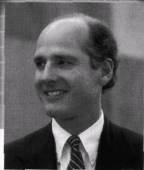|
| |

Jamie Vollmer
America's
public schools can be traced back to the year 1640. The Massachusetts Puritans
established schools to:
1. Teach
basic reading, some writing and arithmetic skills, and
2. Cultivate
values that serve a democratic society (some history and civics implied).
The founders of these schools assumed
that families and churches bore the major responsibility for raising a child.
Gradually, some science and geography
were added, but the curriculum was limited and remained focused for 260 years.
At the
beginning of the 20th century, society began to assign additional
responsibilities to the schools. Politicians and business leaders saw the
schools as a logical site for both the assimilation of immigrants and the social
engineering of citizens of the "Industrial Age." The trend of
increasing the responsibilities of the public schools has accelerated ever
since.
FROM
1900 TO 1910, WE ADDED
1.
nutrition
2.
immunization, and
3.
health to the list of school responsibilities.
FROM
1910 TO 1930, WE ADDED
4.
Phys. Ed., including organized athletics,
5.
the practical arts,
6.
vocational education, including home economics and agricultural
education, and
7.
school transportation began to be mandated
IN
THE 1940s, WE ADDED
8.
business education
9.
art and music
10.
speech and drama
11.
half day kindergarten, and
12.
school lunch programs appeared (We take this for granted today. It was,
however, a significant step to shift to the
schools the job of feeding America's children 1/3 of their daily meals.)
IN
THE 1950s, WE ADDED
13.
expanded science and math education
14.
safety education
15.
driver's education
16.
expanded music and art education
17.
foreign language requirements were strengthened, and
18.
sex education was introduced (topics continue to escalate)
IN
THE 1960s, WE ADDED
19.
Advanced Placement programs
20.
Head Start
21.
Title I
22.
adult education
23.
consumer education
24.
career education
25.
peace, leisure, and recreation education
IN
THE 1970s. THE BREAKUP OF THE AMERICAN FAMILY ACCELERATED, AND WE ADDED
26.
special education (mandated by federal government)
27.
Title IX programs (greatly expanded athletic programs for girls)
28.
drug and alcohol abuse education
29.
parent education
30.
behavior adjustment classes
31.
character education
32.
environmental education
33.
women's studies
34.
African-American heritage education, and
35.
school breakfast programs appeared (Now, some schools feed America's
children 2/3 of their daily meals. Sadly these are the only decent meals some children receive.)
IN THE
1980s, THE FLOOD GATES OPENED, AND WE ADDED
36.
keyboarding and computer education
37.
global education
38.
ethnic education
39.
multicultural/non-sexist education
40.
English-as-a-second-language, and bilingual education
41.
teen pregnancy awareness
42.
Hispanic heritage education
43.
early childhood education
44.
Jump Start, Early Start, Even Start, and Prime Start
45.
full day kindergarten
46.
pre-school programs for children at-risk
47.
after school programs for children of working parents
48.
alternative education in all its forms
49.
stranger/danger education
50.
anti-smoking education
51.
sexual abuse prevention education
52.
health and psychological services were expanded, and
53.
child abuse monitoring became a legal requirement for all teachers
IN THE
1990s, WE ADDED
54.
conflict resolution and peer mediation
55.
HIV/AIDS education
56.
CPR training
57.
death education
I
58.
expanded computer and Internet education
59.
inclusion
60.
Tech Prep and School to work programs
61.
gang education (in urban centers)
62.
bus safety, bicycle safety, gun safety, and water safety education
IN THE FIRST
YEARS OF THE 21ST CENTURY, WE HAVE SUPERIMPOSED UPON EVERYTHING ELSE
63. A layer of high-stakes,
standardized tests
AND IN MOST STATES WE HAVE NOT ADDED A
SINGLE MINUTE TO THE SCHOOL CALENDAR IN FIVE DECADES!
All of these added items have merit,
and all have their ardent supporters, but they all cannot be assigned to the
schools. No generation of teachers in the history of the world has been asked to
meet this goal.
Americans in
every community must come together to answer two essential questions: What do
they want their children to know and be able to do when they graduate, and how can schools and
the entire community be organized to ensure that all children reach the stated goals.
THE BOTTOM
LINE: SCHOOLS CANNOT DO IT ALONE.
SCHOOLS CANNOT RAISE AMERICA'S CHILDREN.

|